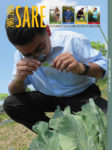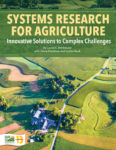Showing 31-40 of 147 results

Cover Crop Role in the Cropping System
Cover Crops and Nutrient Management Cover Crop Impacts on Diseases and Insects Cover Crops, Herbicides and Dealing with Herbicide-Resistant Weeds

Economic and Environmental Aspects of Cover Crops
Economics of Cover Crops Business Opportunities with Cover Crops and Soil Health Environmental Impacts of Cover Crop Systems

Special Topics with Cover Crops and Soil Health
Organic and Specialty Crops Grazing Cover Crops Soil Health Policy Issues

Sustainable Production and Use of On-Farm Energy
Using solar or wind energy or producing biofuels from crop feedstocks and anaerobic digestion helps farmers achieve energy independence while improving profitability and reducing fossil fuel emissions.

2015/2016 Report from the Field
Read about SARE-funded work in the areas of sustainable dairy cropping systems, soil health assessments, nutrient management, cover crops, beginning farmers, pollinators, technical assistance programs for women farmers, and more. This edition includes highlights of projects funded through the graduate student program, and the highly regarded Sustainable Agriculture Fellowship, a professional development program coordinated by SARE and NACAA.

Cover Crop Innovators Video Series
Find short video profiles of farmers around the country who are using cover crops on their land.

Systems Research for Agriculture
Practical information for researchers, educators and extension professionals seeking to understand and apply systems research to agriculture.

Cover Crops for Soil Health Workshop
All session recordings and slide presentations from this three-day professional development workshop are available online. Hosted by Northeast SARE and Delaware State University in March 2016, this event addressed the latest research on the benefits and successful management of cover crops in grain, vegetable and animal production systems.
Overview of Cover Crop Developments Nationwide
Rob Myers (North Central SARE, University of Missouri) provides a national overview of where cover crops stand, including a review of farmer survey data, new equipment and proposed initiatives.
Cover Crop Planting Dates and Seeding Rates
Matthew Ryan (Cornell University) discusses the necessity of proper establishment timing and seeding rates for maximizing cover crop performance. He explains how knowledge of the interaction between these considerations can provide management flexibility and increase cover cropping success.